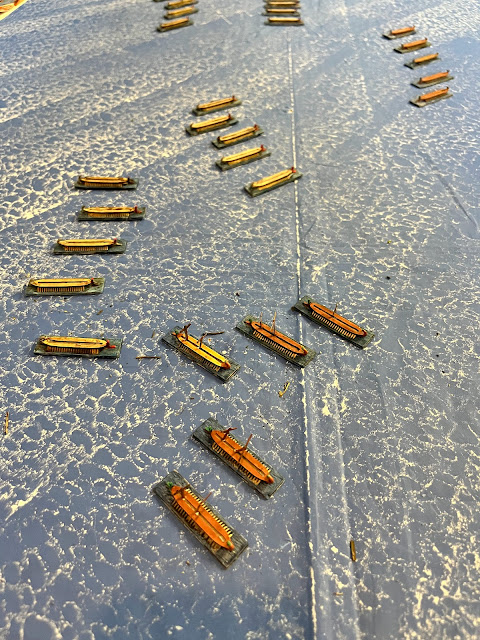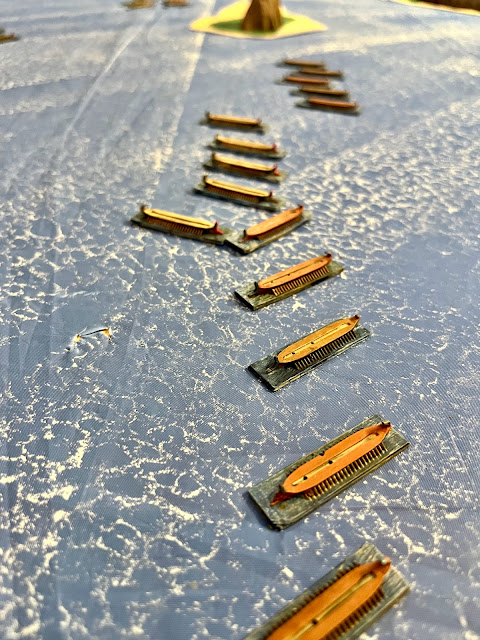Greetings all. Some of you maybe wondering "why so many RPG Reviews?" I know, I know, this is a wargame design blog! However, I have been dabbling a lot in RPG design, writing adventures, and playing RPGs! As part of this, I have been playing a lot of RPG sessions, and reading a lot of different rules sets. Therefore, that has led to a lot of RPG reviews.
Avatar: Legends is a Powered by the Apocalypse system RPG based on the Avatar: The Last Airbender and Avatar: The Legend of Korra cartoon series seen originally on Nickelodeon. So, to many of us that sentence might not make any sense! What does it all mean?
Well, let's start with the setting. The book is about half setting details and half-rules for game play. The setting focuses on a mystical world of various elemental powers, a spirit world, and nations built around affinity to these elements. The elements are Fire, Earth, Water, and Air. In addition, there is a martial arts tradition of "bending" these elements by channeling chi. So, basically it is another Fantasy Asian culture leaning much more towards Chinese and Southeast Asian influences as opposed to Legend of the 5 Rings that leans heavily into Japan.
If you want more setting stuff, try here: https://en.wikipedia.org/wiki/Avatar:_The_Last_Airbender
The players are a group of young heroes who have banded together to complete a great quest or adventure. They all have chosen to participate, are all familiar with martial arts, and are all generally good people. For the most part, they are also mostly tweens, teens, and young adults.
Great, now you know a bit about the premise. So, what the devil is Powered by the Apocalypse? This is a very loose philosophy for running an RPG that has a few similar traits. It is not a "mechanics system" per se as many of the rules that use the PbtA "system" have very different mechanics. However, it is more of a philosophy of how to play RPGs using these general ideas:
- All dice rolls are determined on a 2d6
- 7-9 is a success with complication, and 10+ is a success with some benefits
- The Game master does not roll any dice, only interprets results
- The focus is on Narrative and leaning into the story
- The game is designed to exploit genre conventions and tropes
- There is no Class/Level system, instead using genre archetypes in the form of Playbooks
- There is no Health/Hit points, instead causing conditions to apply to the character
- Players and the Gamemaster use a variety of pre-defined actions known as moves to broadly determine the action, these are designed to highlight the genre of the game.
If you want to know more, you can look here:
https://en.wikipedia.org/wiki/Powered_by_the_ApocalypseSo, now maybe that opening sentence makes more sense. It does? Great! With that being said, let's mount up on our Air Bison and "Yip, Yip" on our way!
Things I LikeThe focus of the game is on creating the "Fiction" of the world. That means, the focus in on telling stories with the characters as the basis of the conflicts. It is a character driven game and therefore the mechanics are designed to lean into telling these stories. Therefore, the details of how exactly a player fire bends, where a player is standing in relation to a threat, etc. are secondary. This game is story first. I like that form of game BUT if you are not into that than this game is NOT for you.
The game uses 4 attributes: Creativity, Focus, Harmony, and Passion. You will note that none of these are "physical" attributes but are related to a character's spirit and personality. In addition, this game has a cool mechanic where each playbook is torn between two values, a black Koi and a white Koi. You move between these two points, and as you go closer to one you get a bonus, and a disadvantage on the opposite side.
Each playbook (archetype or character) has their own unique values and bonuses in stats. They also have a few "special rules" you can choose between. It makes creating the mechanics of creating a character very quick. These also point to a general "attitude" of the player. You see, each playbook is designed to invoke a certain narrative space in the game and reflect the themes of the show. Therefore, mechanically it is easy to build a character. The hard part is the "soft questions" that are used to tie your character into your party and the larger quest.
Normally, players spend time narrating what they are doing, how they are interacting with the world, and respond and bounce off each other. Once a GM feels a check is needed or a move is being used, they will ask for a Move. The GM also has a list of potential moves they can do as the world reacts to the players.
Players or the GMs can choose to end a scene. No more boring "shopping scenes" unless it is a vehicle for character growth and narrative. Thank goodness! This allows the game to keep a good pace, and not get bogged down in "non-value added" game scenes.
 |
| My man Iroh! |
Things I Do Not Like
I do not like that this game actually has three ways to track your status that all interact and overlap. The 2 Kois, a Conditions system that impacts your stats with modifiers, or/and a fatigue system. All three of these states overlap to create a variety of mechanical effects. I think that is probably too many.
Players fail or get complications easily, especially if they are trying to act outside of their area of expertise. A GM that calls for a lot of checks will have to come up with a lot of complications on the fly. In fact, the GM for a such a game should be relatively good at thinking-on-their-feet as much of the game is just "making stuff up" that fits the moment and challenges the character's on a spiritual, physical, and emotional level. This can be challenging with the rules mostly giving general guidelines that the GM is left figuring out.
Character's in this game have certain assumptions about them, that lock players in. All players are good guys who generally get along. They are all essentially friends and people who want to help. The game is not modular at all, and characters are actually a bit restrictive. You do not freely go about picking skills, abilities, or even deciding that you are this way or that way. The playbooks direct you to the type of character you are. Some people will go along with this better than others, and very experienced role-players may chafe at these restrictions.
The game has a relatively simple Growth system that is a series of narrative questions that you ask at the end of a session. Honestly, it seems pretty easy to Grow. However, this normally only leads to players learning new fighting Techniques or other playbook techniques. The game has about a dozen generic styles and a dozen or so bending styles, so a character can theoretically choose from a couple dozen choices as they grow.
Meh and Other UncertaintiesThis game requires a Session 0 to play. You see the group of players work together to create the story they want to participate in BEFORE a single player is made. Yes, you read that right the Players create the story NOT the gamemaster. This game the players lead the story and the GM reacts. Therefore as the game unfolds the GM needs to be ready to improvise and stay on his toes. However, much of the action, conflict, and tension of the game comes from the players themselves.
Most of the book is really designed to help players and GMs to embrace the "Fiction" and how to lean into the fiction. If you have played a PbtA system before, this concept is not new to you. However, if you are coming from a different style of play like the traditional D20 style system with class/level and hard limits than this system is very different for you. All of this ink spilled on how to lean into "the Fiction" is good.
The system is very easy to learn because it leans into a relatively universal mechanic that I outlined at the opening of the review. Much of the book is really leaning into the background material so you can understand the world and the likely conflicts within it. Some could argue about the value of all that background detail that may or may not be used in the game at all.
The game is also fairly straight forward that fail states do not equal death. In fact, death is not a common event in this game. It is very clear that only the evilest of villains kills people. Instead, failed states are often giving up in the face of adversity, exhaustion, etc. Conditions can also be cleared, but each Playbook has specific ways on how to clear a condition, like if you have the Afraid condition, you clear it by running away!
The game has a simple adventure to get you started set in the Hundred Years War. That is basically the period covered in the show, so the most familiar entry point for many players.
There are three chapters to help out the GM about running the game, managing fight scenes, Bending, creating adventures, etc. Basic stuff really.
Final ThoughtsThis is a really fun game IF you like the following:
1. Narrative first games
2. Rules-lite systems
3. Kid's cartoon levels of violence
4. Focus on character interactions
5. Improvisational games
If you are NOT into those styles of games than steer clear.
Notice you do not even need to be a fan of the show, or even have seen much of the show to get into the game. However, some knowledge helps as it will allow you to lean into the Playbooks and the tropes of the series for a more rewarding experience. It will also help you set-up the game easier in the Session 0. However, when we played many of the players had 0 knowledge of the series and it was not a detriment at all.
The mechanics of the system naturally lean you towards playing the game "the right way" and capture the "fiction" of the game. That is the key purpose of the rules, to capture the feel of the series. Overall, I think it is very successful at what it sets out to do. If you can lean into the conceits of the game, you will have fun. If you try to fight against the conceits and style of the game, you will struggle with it.
If you've played the game, let me know your thoughts in the comments.

Or our website:
Or our Messageboard:
Or our Wargames Vault Page:































